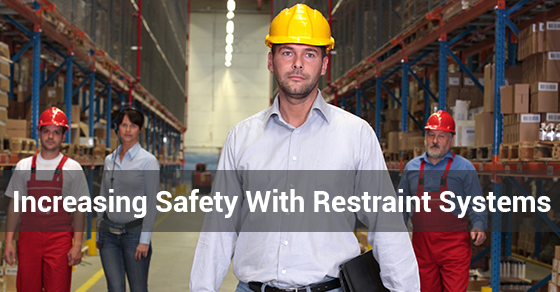Making your workplace safer is a priority that all businesses share. Although there are many different strategies used to protect employees, proper restraint systems are an effective way to reduce the likelihood of injury, increase productivity, and reduce costs.
Understanding the different types of restraint systems and how to implement them properly will ensure that you maximize the safety and efficiency of your most valuable resource: your employees.
Workplace Risks
Loading docks present a unique set of risks to workers. Events such as falls off equipment and the collapse of raised gear are just two of the risks that you and your business face each day.
But you must use the right tools in the correct way in order to receive the benefits they provide. Restraint systems must be selected to meet the needs of your work environment.
Employees must also receive the appropriate training to maximize the return on your investment in their safety. Choosing a restraint system that doesn’t match your operational needs or adhere to the safety requirements of your industry can increase the risk of injury. You need to make sure you understand the restraint systems available to you.
Understanding Restraint Systems
Restraint systems come in a variety types. The safest restraint systems not only include the vehicle restraint but also include both inside and outside signal lights and signs to communicate when it is safe to load the vehicle and when it is safe for the vehicle to depart.
Factors to Consider
Types of mounting: wall mount, surface mount, and under dock mounting
Types of power: automated restraints come in both hydraulic and electric power. These restraints are often safer than manual restraint systems.
When choosing your restraint systems, you need to consider the ease of operation and maintenance for your workers along with its durability to withstand daily use. If a restraint system fails, it can lead to serious or fatal injury.
Your restraint system will be exposed to a variety of elements over time. Debris and extreme weather conditions can impact the components and affect function and safety.
Choose a restraint system that’s built to avoid corrosion and other damage. This increases its durability and reduces the need for replacement.
Restraint systems must have the functionalities in place to allow for the clear communication between operators and the employees below. This allows safe vertical movement and prevents the incidence of injury.
You can make your workplace safer using restraint systems. Understanding the criteria for selecting and operating these systems protects your employees and optimizes the work environment for your business.


